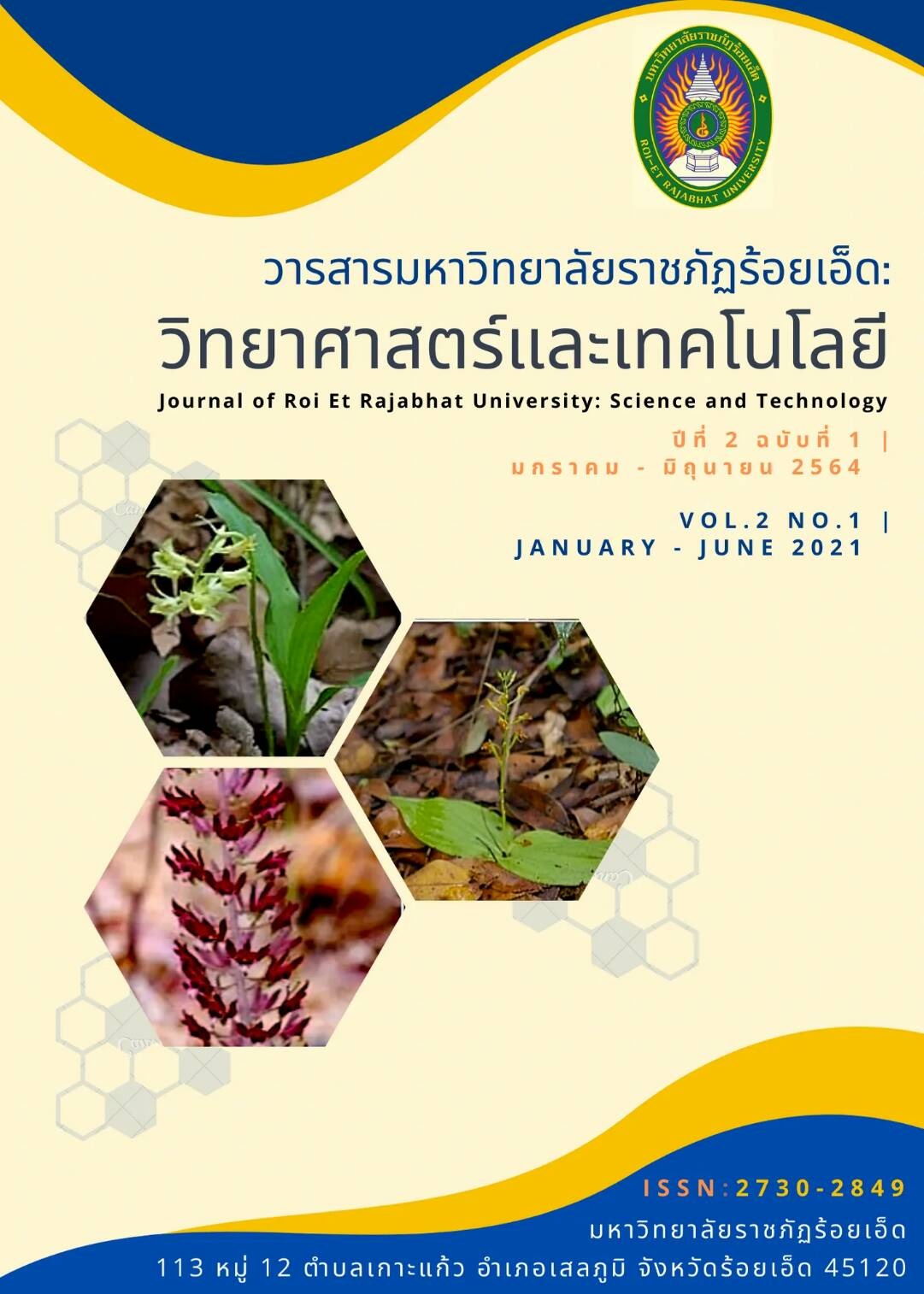The development of East-West Economic Corridor (EWEC) Route and Collaborative Planning process
Keywords:
East-West Economic Corridor (EWEC), Collaborative Planning, Greater Mekong Subregion (GMS), StakeholdersAbstract
This study aims to background and significance of the development of East-West Economic Corridor (EWEC) Route, the guidelines for the development of EWEC in the present time and suggestion for using Collaborative Planning process to economic development in this area. This study attempted to seek for the reasonable support whether collaborative planning process can be employed in developing of East-West Economic Corridor (EWEC) Route especially the area in Thailand can be development successfully and how to reduce conflicts among stakeholder groups in development projects? By critical literature review. The findings showed that East-West Economic Corridor (EWEC) is the importance route for developing economic base on the cooperation of the Greater Mekong Subregion (GMS) and to promote more economic growth. In the present time, the development of East-West Economic Corridor (EWEC) Route in Thailand which transportation has been developed, the investment development especially in the border areas, which will cause more economic value. Although the government also have been action plan for development this area but there is a lack of planning for collaborative development in all sectors, particularly with those in the community who are affected by the development which called that “the collaborative planning”. This approach can benefit and be able to drive economic development and promote the process of public participation for urban development, especially at the local level.
References
กรมโยธาธิการและผังเมือง. (2551). ผังประเทศไทย พ.ศ. 2600. กรุงเทพมหานคร: โรงพิมพ์จุฬาลงกรณ์มหาวิทยาลัย.
กาญจนา แก้วเทพและสมสุข หินวิมาน. (2553). สายธารแห่งนักคิดทฤษฎีเศรษฐศาสตร์และการเมือง. กรุงเทพมหานคร :
สำนักพิมพ์แห่งจุฬาลงกรณ์มหาวิทยาลัย.
ปริณภา จิตราภัณฑ์และ ภาคภูมิ ตีระนันทน์. (2560). ส่องเส้นทางระเบียงเศรษฐกิจ (แนวตะวันออก – ตะวันตก) ไทย
ได้ประโยชน์จริงหรือ. รายงานสืบเนื่องจากการประชุมวิชาการระดับชาติ สาขาเศรษฐศาสตร์ “อนาคตประเทศไทย
ด้านเศรษฐกิจ รอดหรือซึมยาว” 13 ธันวาคม 2560 : คณะเศรษฐศาสตร์ มหาวิทยาลัยรามคำแหง.
พิทยา สุวคันธ์, กนกวรรณ อู่ทองทรัพย์, ศิวริน เลิศภูษิต และทัชชกร บัวล้อม.(2559). ผลกระทบการเปิดเขตเศรษฐกิจพิเศษ
แม่สอด (ไทย)– เขตเศรษฐกิจพิเศษเมียวดี (เมียนมา) ภายใต้กรอบประชาคมเศรษฐกิจอาเซียน. วารสารรัฐศาสตร์
และรัฐประศาสนศาสตร์ ปีที่ 7 ฉบับที่ 2 (กรกฎาคม- ธันวาคม 2559): 30 – 44.
แมน ปุโรทกานนท์,ประเสริฐ แรงกล้าและสิรภพ สุวรรณเกสร (2550). สร้างเสริมกลไกท้องถิ่นเพื่อจัดการผลกระทบที่เกิดขึ้น
จากการพัฒนาระเบียงเศรษฐกิจตะวันออก-ตะวันตก (East-West Economic Corridor) จังหวัดมุกดาหาร:
รายงานวิจัยฉบับสมบูรณ์.กรุงเทพฯ : สำนักงานกองทุนสนับสนุนการวิจัย.
วณิชชา จิตธรรมมา.(2556). เส้นทางระเบียงเศรษฐกิจแนวตะวันออก-ตะวันตก (EWEC) : การพัฒนาที่ไม่สม่ำเสมอผ่าน
ทัศนะของกลุ่มผู้มีส่วนได้ส่วนเสีย. วารสารวิถีสังคมมนุษย์. ปีที่ 1 ฉบับที่ 2 เดือนกรกฎาคม – ธันวาคม 2556.
วรวุฒิ จำลองนาค และทวีศักดิ์ ตั้งปฐมวงศ์. (2557). ผลจากการพัฒนาเส้นทางระเบียงเศรษฐกิจตะวันออก-ตะวันตก
ต่อการจัดการพื้นที่การค้าชายแดนจังหวัดมุกดาหาร. วารสารมนุษยศาสตร์และสังคมศาสตร์. การประชุม
วิชาการ มหาสารคามวิจัย ครั้งที่ 10.
สุทธิเกตติ์ ทัดพิทักษ์กุล. (2555). โอกาสพัฒนาโลจิสติกส์ไทยใน AEC. วารสารส่งเสริมการลงทุน. ปีที่ 23 ฉบับที่ 8 สิงหาคม 2555
โสภารัตน์ จารุสมบัติ, กรกช ศิริโชค, พัชราภา ตันตราจิน, ชุลีพร นุชหมอน (2549). การศึกษาเบื้องต้นเพื่อพัฒนาข้อเสนอ
โครงการเรื่อง การพัฒนาระเบียงตะวันออก-ตะวันตก (E-WEC) และการเปิดสะพานข้ามแม่น้ำโขงระหว่าง
สะหวันนะเขต-มุกดาหาร : การศึกษาเพื่อเตรียมวางระบบการบริหารจัดการพื้นที่ชายแดนด้านสภาพแวดล้อม
ทางธรรมชาติตามยุทธศาสตร์การเปิดประตูสู่อินโดจีน-เมืองการค้าและการท่องเที่ยวจังหวัดมุกดาหาร :
รายงานวิจัยฉบับสมบูรณ์. กรุงเทพฯ : สำนักงานกองทุนสนับสนุนการวิจัย.
สำนักงานคณะกรรมการพัฒนาการเศรษฐกิจและสังคมแห่งชาติ. (2554) การพัฒนาแนวพื้นที่พัฒนาเศรษฐกิจ (Economic
Corridors Development) http://www.nesdb.go.th/ewt_dl_link.php?nid=5136. (23 ตุลาคม 2560)
สำนักยุทธศาสตร์และการวางแผนพัฒนาพื้นที่ (2559). การสนับสนุนการพัฒนาเขตเศรษฐกิจพิเศษทวาย : รายงานการประชุม.
กรุงเทพฯ: สำนักงานคณะกรรมการพัฒนาการเศรษฐกิจและสังคมแห่งชาติ.
อรทัย ก๊กผล. (2552). คู่คิด คู่มือ การมีส่วนร่วมของประชาชนสำหรับผู้บริหารท้องถิ่น. กรุงเทพมหานคร: สถาบันพระปกเกล้า.
Asian Development Bank (ADB). (2008). “Greater Mekong Subregion Development Matrix.” Available at ADB Website, http://adb.org/GMS/ Projects/devematrix.asp. (25 October 2017).
Fiher, R. & Ury, W. (1991). Getting to yes: Negotiating agreement without giving in.New York, NY: Penguin Books.
Gunton, T. I., Day, J.C. & Williams, P.W. (2003). Evaluating collaborative planning: The British Columbia experience. Environments.
McGee, G. J. A. (2006). Evaluating collaborative planning: A case study of the north coast land and resource management plan. MRM Report 399. Burnaby, BC: Simon Fraser University, School of Resource and Environmental.
Innes, J. E. (2004). Consensus building: Clarifications for the critics. Planning Theory, 3(1), 5-20.
Ishida, M. (2007). Evaluating the Effectiveness of GMS Economic Corridors: Why is There More Focus on the Bangkok-Hanoi Road than the East-West Corridor?. IDE Discussion Papers No.123 (October 2007). Chiba: Institute of developing Economies, Japan.
Ishida, M. (2009). Special Economic Zones and Economic Corridors. ERIA Discussion Paper Series No.016 (June 2009). Chiba: Institute Of developing Economies, Japan.
Neil Harris. (2002). ‘Collaborative planning: from theoretical foundations to practice forms’. Planning Futures: New Directions for Planning Theory. London : Routledge.
Patsy Healey. (2008). Collaborative Planning: Shaping Places in Fragmented Societies. 2nd edn.New York: Palgrave Macmillan. John F.
Forester. (1989). Planning in the Face of Power. The Berkeley Planning,Journal : the University of California. Scott Campbell and Susan S.
Fainstein. (1996). The Structure and Debates of Planning Theory. Readings in Planning Theory. Cambridge, MA: Blackwell.
Wondolleck, J.M., & Yaffee, S. L. (2000). Making collaboration work: Lessons from innovation in natural resource management. Washington, D.C.: Island Press.
Downloads
Published
How to Cite
Issue
Section
License
บทความที่ได้รับการตีพิมพ์เป็นลิขสิทธิ์ของคณะศิลปศาสตร์และวิทยาศาสตร์ มหาวิทยาลัยราชภัฏร้อยเอ็ด
ข้อความที่ปรากฏในบทความแต่ละเรื่องในวารสารวิชาการเล่มนี้เป็นความคิดเห็นส่วนตัวของผู้เขียนแต่ละท่านไม่เกี่ยวข้องกับมหาวิทยาลัยราชภัฎร้อยเอ็ด และคณาจารย์ท่านอื่นๆในมหาวิทยาลัยฯ แต่อย่างใด ความรับผิดชอบองค์ประกอบทั้งหมดของบทความแต่ละเรื่องเป็นของผู้เขียนแต่ละท่าน หากมีความผิดพลาดใดๆ ผู้เขียนแต่ละท่านจะรับผิดชอบบทความของตนเองแต่ผู้เดียว






